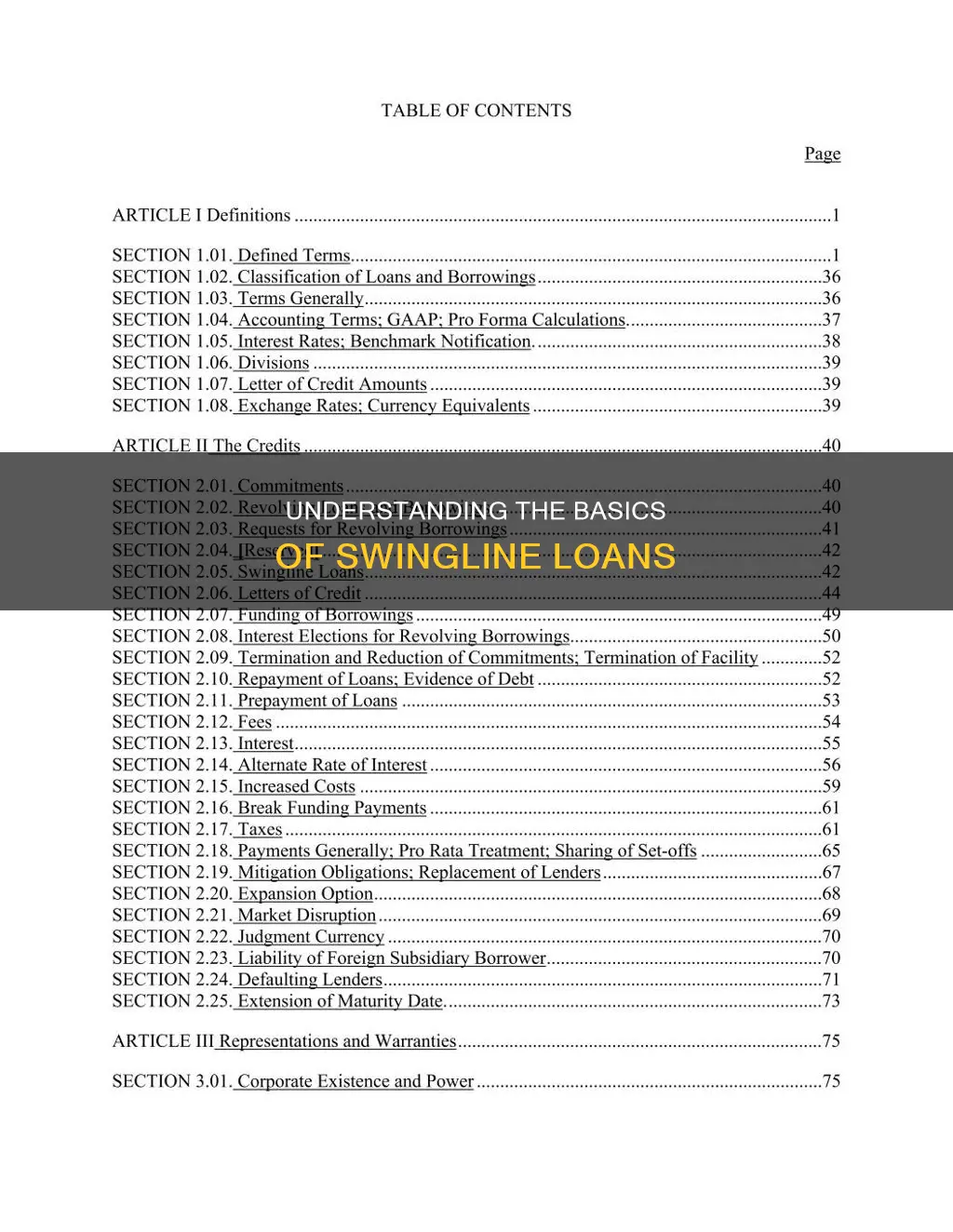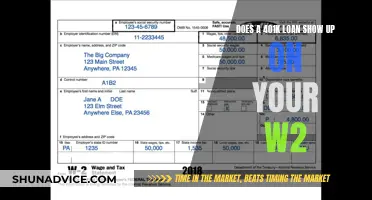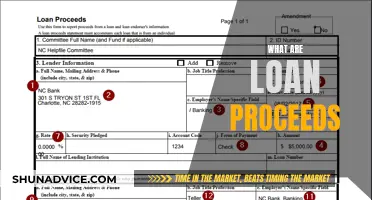
A swingline loan is a short-term loan that provides quick access to capital, usually for debt obligations. They are available to both businesses and individuals. Financial institutions that offer swingline loans include banks and groups of lenders. These loans are often used to cover temporary shortfalls in cash flow and are particularly useful in urgent situations.
| Characteristics | Values |
|---|---|
| Type | Short-term loan |
| Provided by | Financial institutions, single bank or syndicate of banks |
| Available to | Businesses, companies, and individuals |
| Purpose | Cover debt commitments, pay down existing debts |
| Amount | Large sum of cash, smaller than the existing credit facility |
| Interest rate | Higher than traditional lines of credit |
| Repayment | Quick repayment, short operating duration (5-15 days on average) |
| Access | Same day, very short notice |
| Use | Cover temporary shortfalls in cash flow, working capital, new facility expenses, emergency funding |
What You'll Learn

Who can get a swingline loan?
A swingline loan is a short-term loan that provides quick access to capital, usually for debt obligations. They are available to both businesses and individuals.
For businesses, a swingline loan is often used to cover temporary shortfalls in cash flow. The funds are meant to be used for paying down existing debts. They are not to be used for expanding the business, acquiring new assets, or investing in research and development. They are often used as a last resort when other methods of getting money quickly, such as invoice factoring and asset-based lending, are insufficient.
For individuals, a swingline loan is similar to a payday loan, providing quick access to cash.
In general, swingline loans are best suited for those who can afford higher interest rates and repay the full amount within the short term. They are often syndicated, meaning multiple lenders contribute a portion of the total loan amount. However, a single bank can also provide the loan if the amount is small enough for them to bear the entire risk.
Due to the extremely short repayment terms and high-interest rates, companies should try to repay swingline loans as quickly as possible. The average tenure of a swingline loan is no more than 15 days, and they are considered a stop-gap measure rather than a permanent part of a financial strategy.
Understanding Per Diem Interest on Loan Payoffs
You may want to see also

How much can you borrow?
How much you can borrow with a swingline loan depends on several factors, including the type of loan, the lender, and the borrower's creditworthiness.
Swingline loans are typically available in generous amounts, providing borrowers with access to a large sum of cash. There is no standard maximum amount for swingline loans, but sources suggest that the maximum loan amount is usually around $1 million. However, it's important to note that swingline loans are short-term loans, and the borrowing amount may be limited by the lender or the specific program.
Swingline loans are often syndicated, meaning multiple lenders contribute a portion of the total loan amount. In some cases, a single lender may advance or "front" the full loan amount. The availability of funds from multiple lenders increases the potential borrowing amount.
The specific terms and conditions of a swingline loan, including the borrowing limit, may also depend on the borrower's creditworthiness. Lenders typically require a good credit score and may also require collateral, such as a lien on real estate, to secure the loan.
It's important to note that swingline loans are meant to provide quick access to capital and are best suited for urgent situations or when normal processing delays make other forms of loans impractical. The repayment period for swingline loans is typically short, ranging from 5 to 15 days on average, with some sources mentioning repayment periods as short as 7, 10, or 14 days. Therefore, borrowers should carefully consider their ability to repay the loan within the allotted time frame when determining the appropriate borrowing amount.
Understanding DSCR Loans in Texas: A Guide
You may want to see also

What are the pros and cons?
Swingline loans are a type of short-term loan that provides borrowers with access to a large sum of money for a short period of time. They are often used to cover debt commitments and can be a convenient way to address immediate funding requirements.
Pros:
- Faster access to cash: One of the biggest advantages of swingline loans is that they can be accessed within a few hours or even minutes, providing a quick solution to liquidity needs.
- Better cash flow management: Swingline loans allow businesses to access their funds whenever required, reducing the amount of working capital required and improving overall cash flow management.
- Earn trade discounts: Borrowing money quickly through a swingline loan can enable businesses to take advantage of trade discounts offered by suppliers for upfront cash payments.
Cons:
- High-interest rates: Swingline loans typically carry higher interest rates than traditional lines of credit, increasing costs for borrowers.
- Short repayment terms: These loans have very short repayment terms, usually within a few days or weeks, which may not be suitable for borrowers who cannot repay within the short term.
- Restrictive covenants: Swingline loans come with strict restrictions on how the money can be used, making them an inconvenient source of financing for businesses that need more flexibility.
- Fees and penalties: Due to their short duration, swingline loans can result in a large number of fees and penalties if not paid off on time.
- Risk of losing collateral: While most swingline loans are unsecured, some lenders may require collateral. Defaulting on the loan could result in the lender seizing the collateral to recoup their losses.
Unitranche Loans: Understanding This Unique Debt Financing Option
You may want to see also

How do you get a swingline loan?
A swingline loan is a short-term loan that provides quick access to a large amount of cash. They are usually used to cover debt commitments and can be taken out by both businesses and individuals.
If you are considering a swingline loan, it is important to assess your financial needs, repayment capacity, and explore different options to find the most suitable solution for your requirements. You can compare all available options by researching online lenders, visiting your local bank, or going to large national banks to inquire about their swingline loan products.
When applying for a swingline loan, lenders will assess your credit score, repayment history, and time in business (if you are a business owner). Lenders will also consider your financial stability and creditworthiness to ensure you can repay the loan within the agreed terms. Presenting a comprehensive overview of your financial health will increase your chances of approval.
It is also important to keep in mind that swingline loans often carry higher interest rates than traditional lines of credit, and the funds are limited to covering debt obligations. The use of funds from a swingline loan is often limited to paying down existing debts, and cannot be used to expand a business, acquire new assets, or invest in research and development.
Grants vs Loans: Understanding the Key Differences
You may want to see also

What are the repayment terms?
Repayment terms for swingline loans are typically short, ranging from five to fifteen days on average. This is because swingline loans are designed to provide borrowers with access to a large amount of cash to cover debt commitments for a brief period.
Swingline loans can also take the form of revolving credit, which means that borrowers can repeatedly draw on and pay back the loan. In this case, the cycle of repayment and withdrawal can continue indefinitely, as long as all the borrowing conditions are met and neither party decides to close the line.
When assessing a borrower's application for a swingline loan, lenders will evaluate their creditworthiness and approval will be based on various factors, such as financial health, credit history, and repayment capacity. Borrowers with a strong credit history, stable financial performance, and a clear repayment plan are more likely to qualify for a swingline loan.
It is important to note that swingline loans often carry higher interest rates than traditional lines of credit, and borrowers may face additional fees or interest charges if they encounter challenges in repaying the loan on time. Therefore, borrowers should carefully consider all available options and compare interest rates before taking out a swingline loan.
EZ Cash Loan: Quick, Easy, and Secure Lending
You may want to see also
Frequently asked questions
A swingline loan is a short-term loan that provides quick access to a large amount of capital, typically used for debt obligations. They are available to businesses and individuals.
The pros of a swingline loan are that they provide immediate liquidity, are flexible, and are quick. The cons are that they often carry higher interest rates than traditional lines of credit and the funds are limited to covering debt obligations.
Lenders assess their risk tolerance, capital adequacy, and regulatory compliance before offering swingline loans. They also consider the borrower's credit rating, industry trends, and economic conditions.







